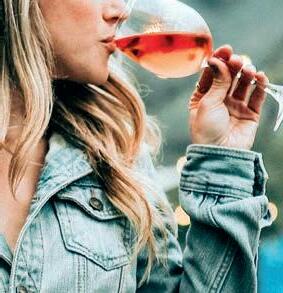
5 minute read
WHAT’S IN MY GLASS Emile Joubert’s top wine selection
What’s in my glass?
EMILE JOUBERT
Advertisement








Over the past year or so, the Cape’s original wine region – Constantia — has found itself in the wine world’s headlines. It’s a story we South African’s know (or should know) all too well; the tale of Constantia’s glorious history of making sweet wines that wooed the nobility, the courts and the emperors of Europe in the 18th and 19th centuries. Great history counts, for sure, but it is important to note that the heady days of Constantia continue unabated. This spectacularly beautiful region still produces formidable wines, building on its heritage and continuing the legacy and provenance established by those folks of yore who, under the banner of the Dutch East India Company, pioneered winemaking on the southern tip of Africa.
1Klein Constantia, one of the superfarms here, clings to history in the making of its excellent Vin de Constance sweet wine, an ode to the forefathers. But the estate has also embraced Sauvignon Blanc, the world’s modern-day wine hero that, over the past four decades, has become one of the top white grapes in the world along with Chardonnay. In the right hands and made from grapes grown on patches of earth suitable to expressing the complete dimension of
variety, Sauvignon Blanc can be a serious white wine that rivals the multi-pronged complexity of Chardonnay and Riesling. Matthew Day, winemaker at Klein Constantia, has the right hands and, over the past few years, has taken Klein Constantia into the lofty realm of one of the world’s great Sauvignon Blanc wineries.
The Klein Constantia Estate Sauvignon Blanc 2021 was launched in January this year and in introducing the wine, it is clear Matthew Day is as much a conductor as a winemaker. Ah, that restlessness of youth; 43 parcels of Sauvignon Blanc each bear a fingerprint of individuality that, after being vinified, provide Matthew with a palette of wines from which the final blend is put together.
Despite the complexities in getting to the final product, Klein Constantia Sauvignon Blanc 2021 has a disarming purity about it, the kind of simplicity that makes great artworks stand out. Think the bass-driven introduction to Cream’s epic track ‘Badge’. Or the sepia landscape photographs of Ansel Adams. This wine, from a 70ha patch of Constantia mountain earth looking east to the ocean, is uncluttered despite the intricate process whereby the di erent pockets of Sauvignon Blanc are brought together as one. It is wild yeast, grape juice and lees, and that is it. A work of nature, from nature and nature only. It o ers a gracious, muscular entrance to the palate, distinctively Sauvignon Blanc with ru ed tropical edges of granadilla, loquat and cantaloupe.
Having mentioned Chardonnay, it is noticeable how rapidly the market for unwooded wines made from the noble grape variety is growing. We South Africans seem to love our white wines cool and bright, and by making Chardonnay without subjecting the wine to oak, these characteristics are delivered with precision and accessible appeal.
2Springfield Estate in Robertson, also very well known for Sauvignon Blanc, makes a cracker of an unwooded Chardonnay under the label Wild Yeast, now o ering the 2020 vintage. This name is especially relevant as it describes why this wine has such a specific character, one I find particularly delicious.
One must remember Robertson is South Africa’s pre-eminent wine region for Chardonnay. The reason for this is the area’s soils have the highest content of chalk of any other of the country’s regions, and it is this chalk, which allows for Chardonnay grapes to grow with the balanced chemistries that give the wine its fierce varietal expression.
Springfield Wild Yeast allows the juice to ferment with the natural yeasts found drifting around the cellar instead of adding manufactured commercial yeasts, as is the case for most wines. The natural yeasts eat the sugars in the juice, converting these to alcohol and leaving some tantalising flavours behind in the wine. So, although the depth and character that oak barrels o er are not present in the Springfield Wild Yeast, the nature of the fermentation leads to riveting and interesting flavours in a most pleasant rendition of Chardonnay.
Typical notes of citrus and green apple drift on the top layer, underneath which there is a lovely nuttiness with a slight presence of spice, all the result of the individual character of the wild yeast bugs that o set the fermentation. This Chardonnay is not searingly dry and acidic nor cloying in an over-fruited way. It’s just a perfectly balanced white wine that is as qua able as it is suited to dinners and occasions requiring white wine elegance.
3Talking about popularity, rosé wines are in the pink as supply struggles to keep up with demand. Among the plethora of great Cape rosés, the Waterkloof
Circumstance Cape Coral Mourvèdre
Rosé 2021 is a constant addition to my wine fridge. The punchy Mourvèdre grape from Southern France is known for its meaty juice, which, when given a brief run over its ink-purple skins, is a superb base for a rosé wine. The grapes are whole-bunch pressed — trés gently — without any further skin contact required to give the juice a light salmon hue. Fermentation occurs through indigenous wild yeasts and takes place in wooden fermenters, allowing just the required degree of oxidation to layer the final wine with character.
It all ends brilliantly with a rosé showing texture on the palate, permitting the playful flavours of berry and potpourri to carry through to a crisp, dry finish. Like all good rosé, this is summer in a glass, no matter which part of the year the wine is consumed. Which, for me, is all round.










